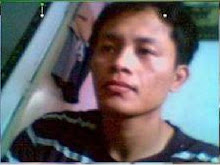It was this 1st semester(2010) of the year that caught my attentions of Book scanner and brought a challenging skills to design such machines,and that includes my scope of work for that year.Of course I was lucky enough to see those old model camera that were used before in scanning , microfilming and book digitization those were the day when you cannot apply zooming digitally but mechanically will do.One of our archivist, the pioneering staff in microfilming(media services)toured me in the whole wide area of the main library and was really surprised of what I had witnessed.I saw some giant frame of a scanner might be 6ft or 7ft long and a gigantic metal with belt for its actuation doing motion scanning.
And here we are again folks, after some assignments: MIS , Dbase and Data Network programming the next task is to design a book digitizing machine which is able to process or scan books automatically.For a little time ,I'm having a review with the code of machine vision ;of course an Open source or free software.Again,I could also apply my little background or know-how on mechanical and electronics (Mechatronics) ,But for now , I doubt if there is a n need of a simple embedded MCU control in this project automation -lets find out .This website"http://www.diybookscanner.org/wiki/index.php?title=Main_Page" help me a lot in doing such kind of Robo-Book Digitization project.Before starting the materials' procurement I have listed below words that need to be understood and define as much as possible in the sense that I could have a fast track project developments-Robo-Book Digitization
First, I have joined the Bookscanner group a community where in people are generously brilliant hobbyist who loves books for their respective good will to it.They could help you at whatever side of thoughts you would ask they have the complete solutions to have your own book scanning machine completely done. Secondly, my intentions to debug and decode decapod, a fluid project ; this is another major projects which aimed to innovate a book scanning machine.There are some development happen in the project that caught my observations : I have found out that they are using gPhoto (for capturing image) and OCROpus for " Optical Character Recognitions and some are patch scripts that wholly combined into one apps-Decapod.I was a little bit confuse of the technique used after the gphoto or image capturing process (what I mean was that its equivalent to ScanTailor)-what is that? And that could be a challenge of finding the decapod tricks to edit the picture before OCR engine took the functions.Actually I have some scratch program in testing the pre-process and the post-process.Well, lets take a look out what and how decapod are featured of -we are going to find a better and clearer understanding about decapod and then tweak it.
Thirdly, need to review all things up and down from start up until to the finale stages of this project then started my rough drop of budget proposal.
And the last, I was slowly outsourcing all the materials that need to be purchased and had downloaded all those open-source for my own scrutinizations- I am again burning my eyebrows and my hair is compressing a little bit(is that an R&D?) well they said it.Anyway,I have contacted some machinist out there to do the mechanical stuff for this project and not to forget the glassware also for the quotations of fiber glasses used for framing and handling.
1) The first recourse is to have the outsourced materials at hand: The purchase of a digital camera,the initial stand to hold the camera and a simple lighting.
2)We will be using 3 different Linux -OS : Fedora ,Ubunto and CentOS these are my favorites platform and still believing that the this group will be the best Linux-OS ever.
3) I need the software at this moment, the candidates are: a) gPhoto b) ScanTailor c.1) Tesseract c.2)OCROpus C.3) d) Kpdf e) Page Builder f) Install Gambas-Basic g) install lib*(actually gambas filled the emptiness inside-Yahoooo!) 4) We do canvassing in the Hardware or DIY (Do it yourself) Thread screws Aluminum steel "4x2x6 ft" Acrylic glass (Fiber Glass) Huts & Volts Bulb,Fluorescent ,head lights halogen[gallium arsenide] (Ok, supply the missing item/s)
5)After downloading and installing the software we are going to create a single work flow of the system process-making it more convenient and making it an awesome fast book scanning- believe me.This will be done by using the enhance VB in Linux(Gambas-Basic) and programming the : API,CGI and its GUI(it might be using Stereo Vision-yes really it could).We will be tweaking the all these process in command line interfacing and catch it in the the GUI-you know what I mean bro?
6) Capture ------>Edit ----> Digitize/Filter------>Layout Recognitions------>Conversion----->Retouching Finale.
7) Have a simple (hardware[using FreeCad9] & software)assembly before the flash of a camera
8)Let us do it now!(wait I need to all list all the P.O) First Phase Second Phase Automation of a Book scanner Flip-Flop 1: Sliding pages and opening through frictions Flop-Flip 2: Sucking pages and opening it from left to right side Note:*** This blog page will only tackle Phase 1 of the project the software involves and the frame of the scannerDetail(1) A decade archive of Camera

Detail(2) Museum Camera retreival

Detail(3) Branded Digitizing Camera

Detail(4) Old Digitizing Camera

Detail(5) Canon Digitizing Camera

Detail(6): Initial Proto-Design of " RoBook Scanner"

Detail(7) RoBook rotator

Detail(8):RoBook Rotator-Motor

Detail(9) : RoBook frame

Detail(9): RoBook Camera Stand

Detail(10):RoBooK Stand (Perspective view)

Detail(11): Camera Capture Calibrations-(Fluid Decapod File)
Remarks:
Conclusions:


